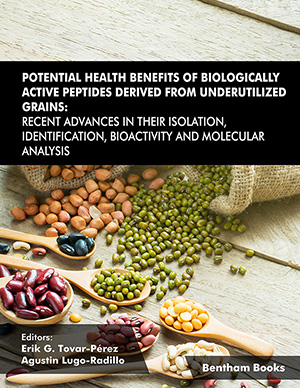Abstract
Sorghum (Sorghum bicolor L. Moench) is an important staple food crop
grown worldwide, easy to grow and drought tolerant. In recent years, sorghum grain
has been increasingly regarded as a promising feedstock for the production of bioactive
compounds. In particular, its main protein (kafirins fraction) has been used for the
generation of biologically active peptides due to its high hydrophobic amino acid
content and its hypoallergenicity. Several studies have shown that sorghum-derived
peptides have antioxidant, anticancer, antimicrobial and anti-inflammatory activities,
among others. These beneficial health effects could be attributed to the fact that in
general, peptides derived from kafirins present glutamic acid and non-polar amino
acids: proline, leucine and alanine. It has been reported that the presence of these
hydrophobic amino acids in peptides facilitates their interaction with free radicals by
neutralizing them, in addition to their low molecular weight and the position of the
amino acids in the peptide sequence. Therefore, sorghum is a cereal with high potential
for the production of biologically active peptides with benefits for human health.
Keywords: Alcalase, Bioactivity, Cereal, Health properties, Hydrophobicity, Kafirins, Peptide extract, Peptide fraction, Peptide sequence, Prolamins, Protein hydrolysate, Purified peptides, Sorghum flour, Sorghum grain, Sweet sorghum, White sorghum.






















